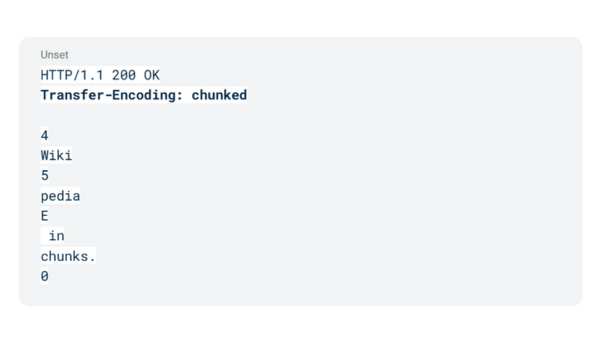Troubleshooting Transfer-Encoding: Chunked issues on HTTP Keep-Alive Connections

30 May 24

Ensuring that the server correctly handles the end of a chunked transfer and properly cleans up the socket buffer is essential to maintaining smooth, error-free communication between clients and servers.
HTTP is one of the fundamental protocols for communication between browsers (clients) and web servers. One of its features is the ability to maintain open connections with the keep-alive option, which allows for improved efficiency by reusing the same TCP connection for multiple requests.
However, this functionality can bring with it some challenges, especially when using chunked transfer encoding (Transfer-Encoding: chunked) since junk data can remain on the socket in keep-alive connections, interfering and causing errors.
First, let’s briefly look at how Transfer-Encoding: chunked works. This mechanism allows the server to send data in a series of chunks, which is useful when the server does not know the total size of the data in advance. Each chunk is preceded by its size in hexadecimal, followed by the chunk data, and ends with an end-of-line marker. The end of the transfer is indicated by a chunk of size zero.
Example of a response with Transfer-Encoding: chunked:

In scenarios where keep-alive connections are used, if the server does not properly handle the end of the chunked transfer, it is possible that unwanted data (junk) remains on the socket, which can interfere with subsequent requests reusing the same connection.
Suppose you have a server that sends responses encoded in chunks. If the server does not properly read and handle the zero-size chunk that marks the end of the transfer, the remaining data on the socket may be interpreted incorrectly by the client in the next request.
To diagnose this problem, you can use tools that analyze data packets such as Wireshark (open source) or enable detailed logging on your server and client.
Look for patterns where the expected data ends up correctly but you see additional content that shouldn’t be there in subsequent responses.
Example of a log showing the problem:

– Make sure the server handles the end of the chunked transfer correctly:
– Check server settings:
– Clean the socket:
– Update your server:
Using chunked in combination with keep-alive connections is a very good technique to optimize HTTP communication. The key is that the server properly manages the end of the chunked transfer and performs a correct cleanup of the socket buffer to ensure continuous and error-free communication.